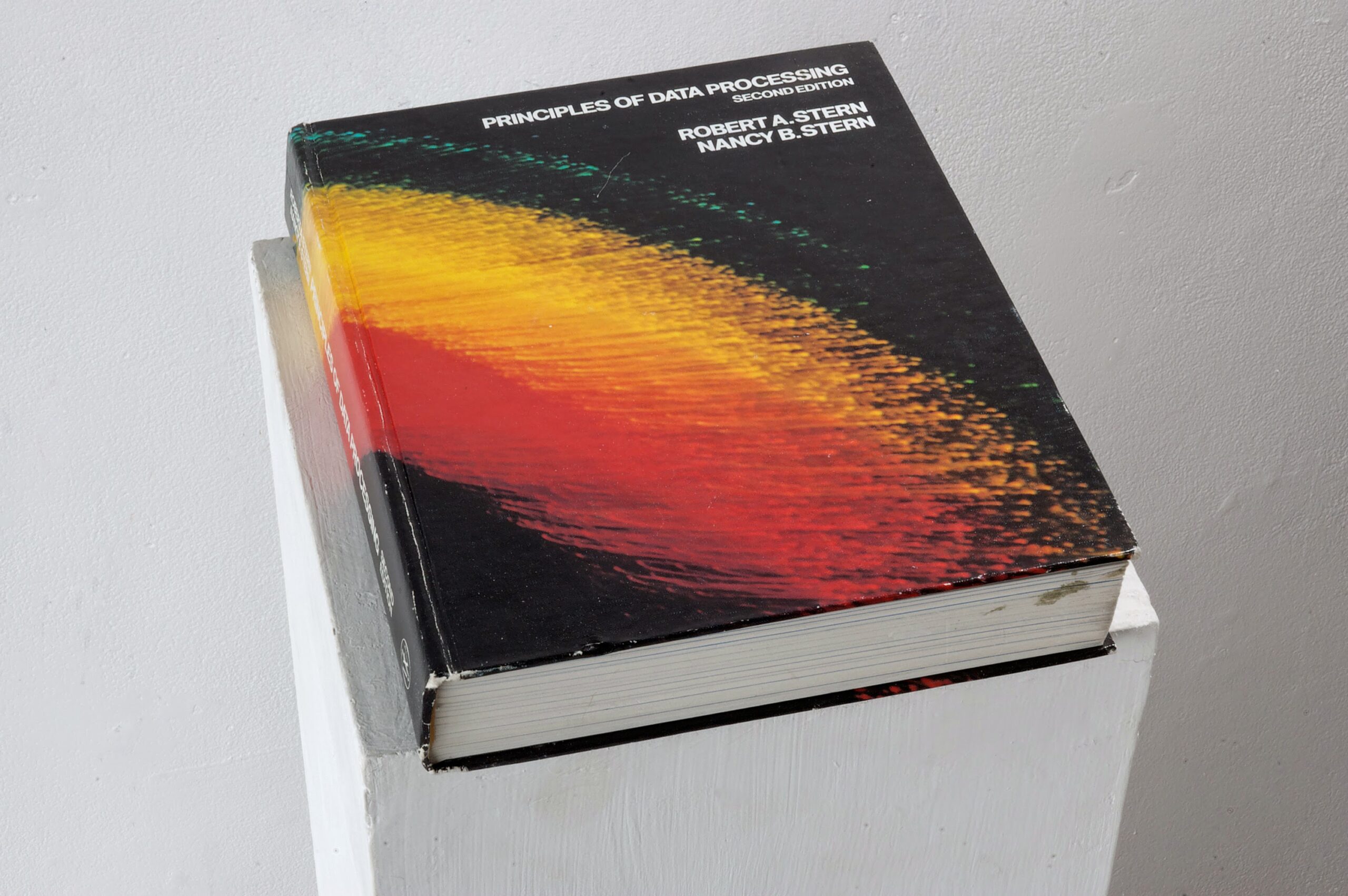This installation, “Principles of Data Processing,” exhibited at Kingston University 2nd Year Interim Show, presents a compelling meditation on the nature of information, its encoding, and its potential for both clarity and profound obfuscation. The work centers around a physical copy of the textbook “Principles of Data Processing” by Robert A. Stern and Nancy B. Stern, a seemingly straightforward vessel of knowledge that undergoes a radical and alienating transformation.
The installation’s core conceit lies in the conversion of the textbook’s content into binary code, the fundamental language of digital technology. This conversion is achieved through OCR (Optical Character Recognition) to digitize the book, a converter to translate the letters into binary code, and then a text-to-speech engine (similar to that used in “Ruby & Eliza”) to audibly articulate the binary code as a series of “zeros” and “ones.” The viewer experiences the book not as a source of readable text, but as a stream of machine language, rendering its contents utterly incomprehensible to the human ear.
The visual presentation of the work is simple yet evocative. The open book rests on a plain white plinth, drawing the viewer’s attention to the object itself and its altered state. The speaker embedded within a circular cutout in the book’s page becomes the source of this disembodied voice of binary, further emphasizing the transformation of the text into an alien form. The book’s cover, visible in the images, identifies it as a specific text, grounding the conceptual exploration in a tangible artifact of learning and information, now rendered inaccessible.
“Principles of Data Processing” explores the inherent paradox of digital information. While binary code enables the storage and transmission of vast amounts of data, it simultaneously abstracts and obscures the original meaning for human comprehension, creating a barrier between the information and the human receiver. The installation prompts a visceral reflection on the limitations of our perception, the potential for information to become noise, and the philosophical implications of translating knowledge into a purely symbolic and ultimately alienating form. The work questions whether the essence of information is contained in its symbolic representation, even when rendered audible, or in its comprehensible meaning for the human mind.
Materials Used: Book (“Principles of Data Processing” by Robert A. Stern and Nancy B. Stern), plinth, speaker, computer, OCR software, binary code converter software, text-to-speech engine software.
Exhibited at: Kingston University 2nd Year Interim Show.


